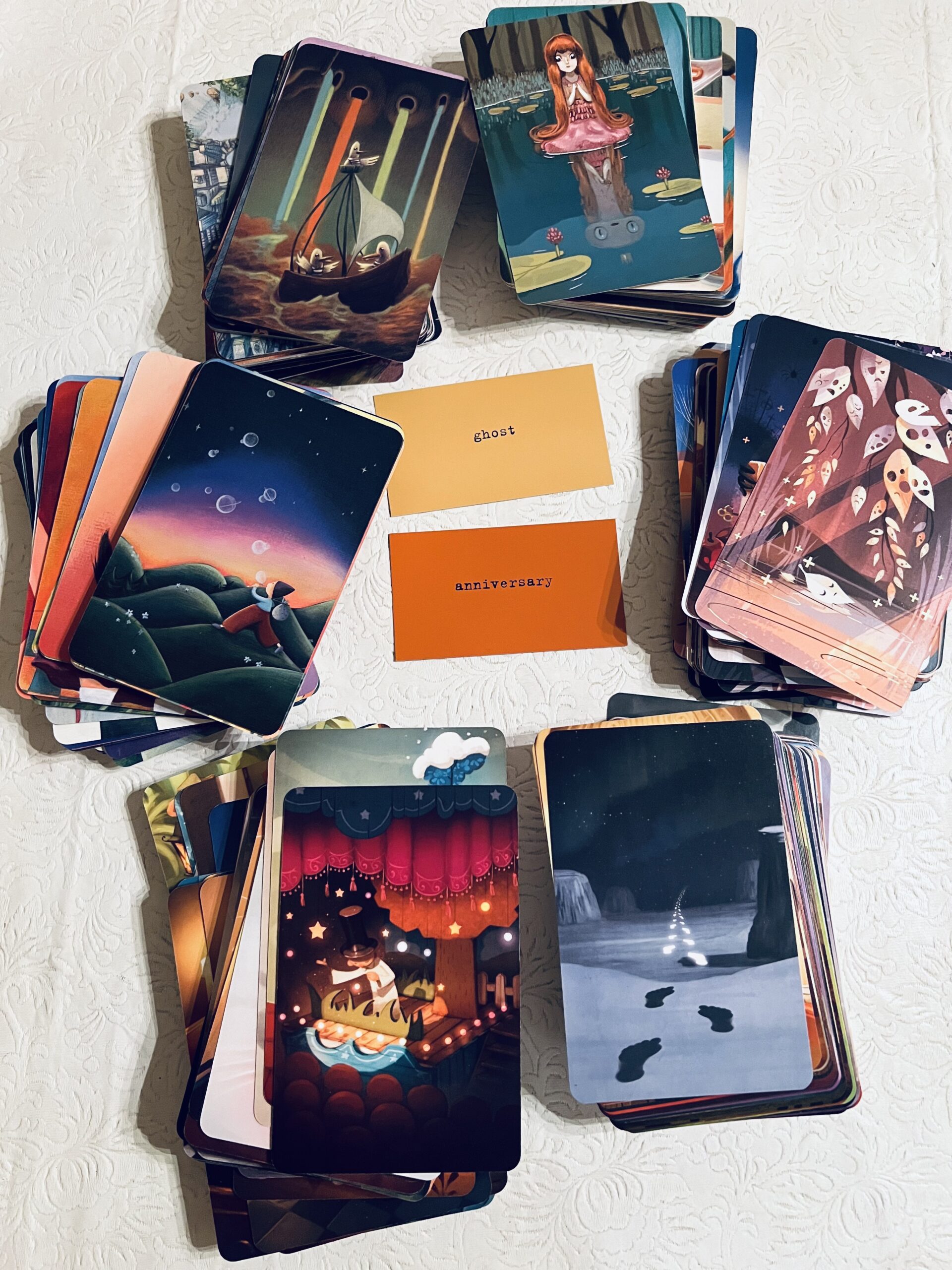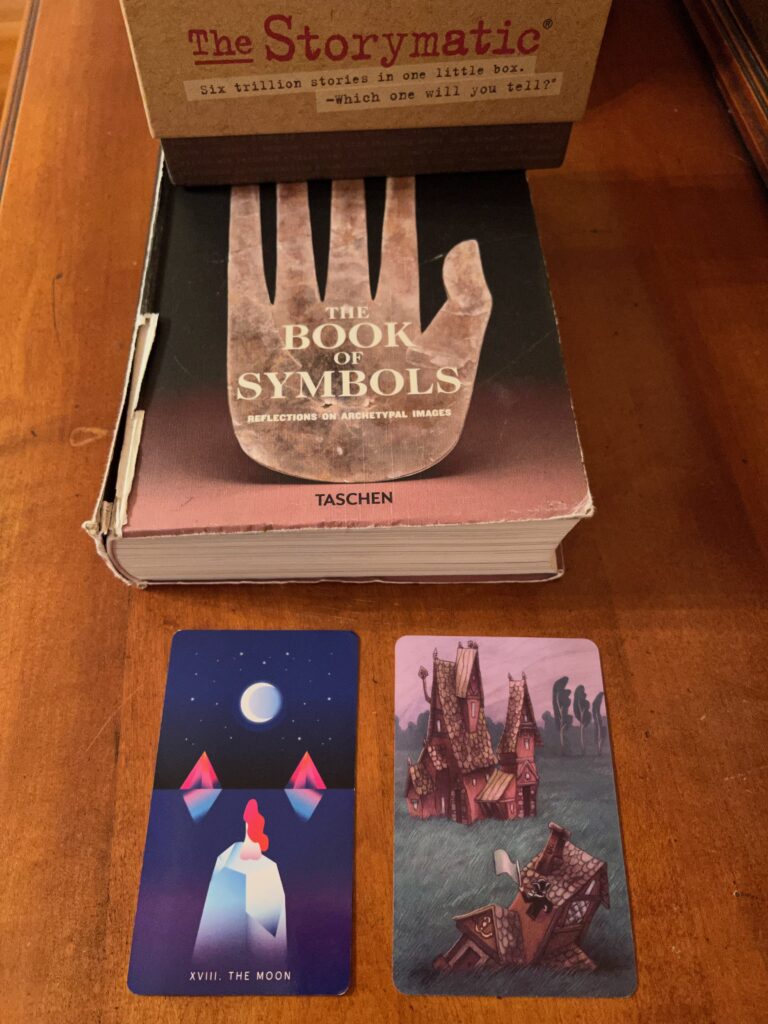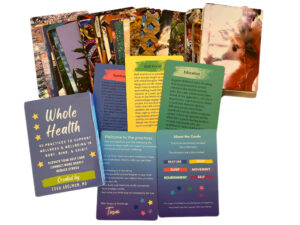Journaling is wonderful and hugely beneficial practice for wellbeing. When we write things down, we concretize them. We externalize them. We get them out of our heads. We discover things, patterns, relationships, in our experiences.
I have recently started a 20 minute journaling practice blending tarot, Dixit Cards, Storymatic Cards, and a book of symbols. This is a very fun, engaging, creative, and insightful process. You can use this process either for personal insight and exploration or to create a fictional story. Here is what I do, primarily for personal journaling:
1. I have numerous Dixit decks (original Dixit, Memories, Origins, Journeys, Revelations, Harmonies). I have not yet mixed my decks. Rather than choose a deck to work with, I let tarot choose for me. I pull a tarot card for each Dixit deck and use the deck with the tarot card I resonate with the strongest. For example, today the card I resonated with was The Moon which landed on Harmonies.
2. I randomly pull a card from the Dixit deck. This allows the card to function like a suggestion in improv as I, through the below process and free association, relate to it personally.
3. I set a timer for 20 minutes. First, I ‘map’ the card. I write down all the elements on the card, including emotional tone, relationships, what I notice first, objects, strong colors, and any initial thoughts about the card and personal associations.
4. Next, I pull 2 gold cards from Storymatic to give me insight and ideas for characters/people, either in the scene or related to it. This provides context for what is depicted in the card. Deepening the context of plot, I pull 2 red Storymatic cards. The Storymatic cards are optional and I don’t always integrate them into my journaling. Sometimes, though, there is a strong ‘AHA!’ moment with the Storymatic cards and they really connect the Dixit scene with the personal.
5. Sometimes I go back to the initial tarot card and see if that adds anything to my Dixit card analysis.
6. Now I use my symbols book. You could probably use any book on symbols or dreams. These descriptions don’t need to be taken literally but do add inspiration as you consider the ideas various elements of a Dixit card might represent, especially in relation to each other, and that resonate with you. Again, like in improv, these function as suggestions.
7. I consider all of the above and how it might relate and apply to my life, especially to any current issue or concern, and I write. My current issue/concern can now be ‘mapped’ onto the Dixit card and all of the ideas and themes discovered through the above processes.
As noted above, this could also be used to create a super interesting fictional story, especially with more explicit use of the Storymatic cards.




